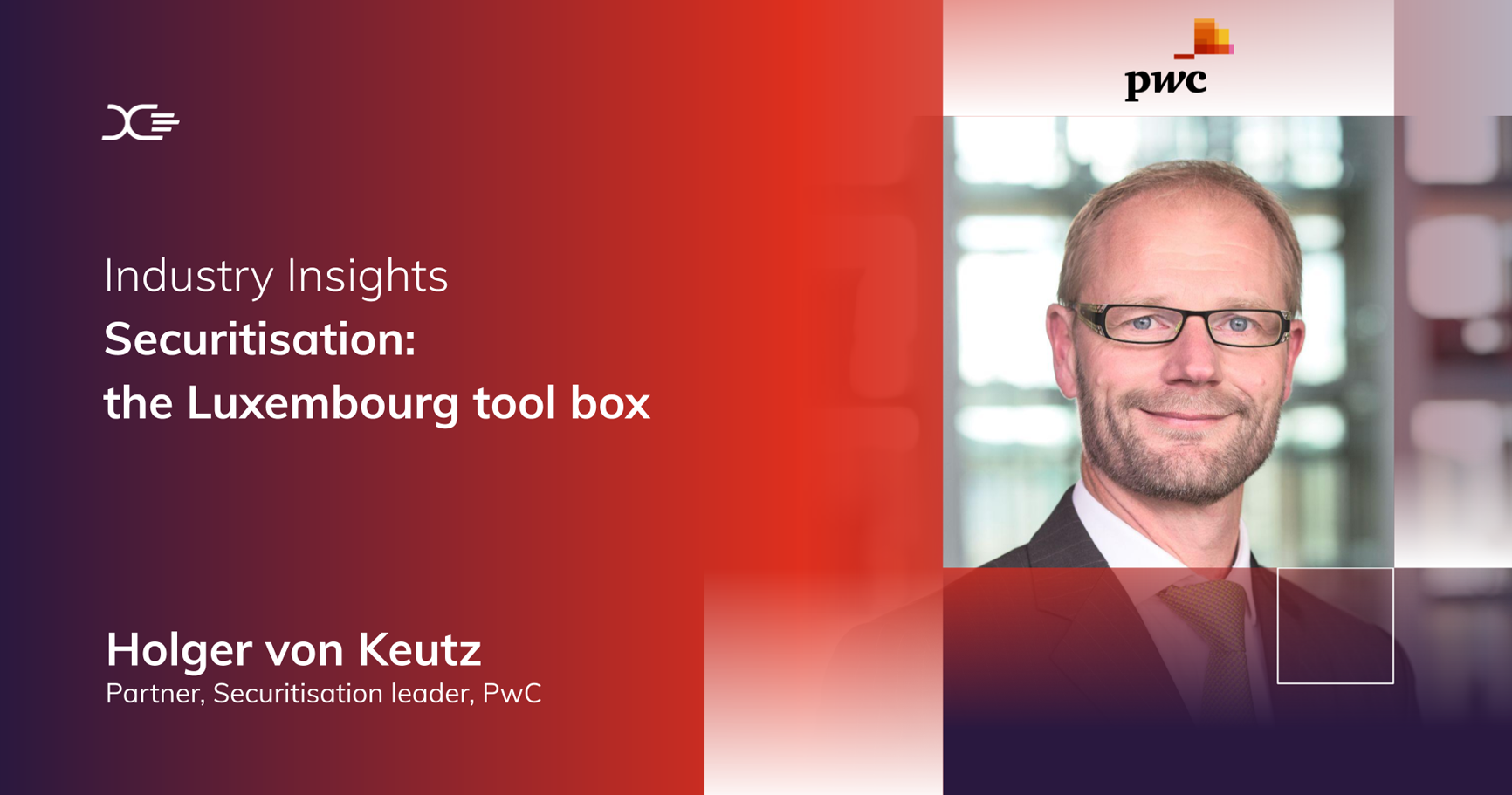The role of private debt as a portfolio diversifier for institutional investors
Amid the low yields on offer on traditional fixed-income assets, private debt is emerging as a strong alternative. For institutional investors, adding private debt exposures to their portfolios can help improve diversification due to the low correlation of private debt to equities and fixed income, as well as an attractive risk return profile, believes Pedro Carvalheiro, who heads up CrossLend’s Lisbon office.
Hi Pedro, can you please give us a quick overview of your career?
Before joining CrossLend, I had always worked in the banking sector. I started as an FX and fixed income trader, generating value for banks’ balance sheets and executing clients’ orders. I carried out such a role at several banks. Later I moved to BNI Europa, eventually becoming head of the capital markets and investment department. My time in this role overlapped the current low yield environment. As a result, we began to explore different asset types, including private debt opportunities. Therefore, we worked a lot with various FinTechs towards different solutions to increase our services for the end client, offer white label products, and build a private debt portfolio originated by Peer-to-Peer Lenders across Europe & the US. While I was there, I became more and more familiar with private debt.
Ultimately, when the opportunity at CrossLend arose, it was exciting for me to work directly within a FinTech and outside the banking sector, given that there are always many constraints on banks from regulators that can slow down innovation in this particular field. In addition, CrossLend is working across multiple facets of the private debt space. I see a lot of opportunities for us here to improve access and efficiency in the debt markets in Europe.
In addition, something that sets CrossLend apart from working for, say, a traditional asset manager is that we have a specific focus on data and on using technological developments to leverage this data. One thing holding back the growth of private debt as an asset class is that the data is challenging to handle. It’s not very transparent and usually quite fragmented, so CrossLend can bring this transparency and structure to the markets via several products and solutions. CrossLend’s vast outreach on the European Digital Lending market and its innovative solutions allow it to offer a superior private debt product to investors.
Refinancing digital lenders or non-bank originators is an important sub-section of the private debt market. What do you think the appeal is for institutional investors, and which type of investor is this asset class a good fit for?
As you mention, refinancing non-bank originators is very relevant. As banks reduced assets to meet stricter capital requirements imposed by Basel III following the 2008 financial crisis, non-bank lenders started filling the gap by providing loans directly to companies without using a bank as an intermediary. This movement toward direct lending is particularly relevant to Europe’s economic recovery as corporates and SMEs remain a leading source of economic growth.
Such an environment has created awareness of the need for non-bank lenders to help finance companies and the real economy.
As a result, SME businesses and corporates are increasingly aware of alternative funding options and turn to non-bank lenders for an alternative source of capital. Also, these companies have more bespoke requirements and a need for greater flexibility in terms of financing structure so that non-bank financing could be the most viable funding solution. Such events helped the growth of nonbank lenders and the growth of private debt available for other institutional investors.
A private debt portfolio could be of great appeal due to its higher return and lower volatility. In addition, due to its small loan size, such a portfolio is well-diversified and has a significant low correlation with more traditional asset classes. Of course, the investor should consider it a long-term investment since there is no concrete secondary market to give liquidity to this asset class.
So, in my view, insurance companies and pension funds are strong candidates to grow their exposures to this section of private debt, given the potential benefits for their portfolios. Also, when it comes to banks, there can also be demand from saving banks or service focused banks, particularly those that don’t have loan origination capabilities. In parallel, we see the EIF, BBB in the UK, the Ireland Strategic Investment Fund or other sovereign entities using non-bank origination to support the European economy, mainly through SME finance.
Therefore, when we look at the position of institutional investors more broadly – insurance companies, pension funds, and other institutional investors – we see they have significant exposure to traditional assets, like bonds and equities. Alternative assets represent a smaller part of their portfolio, particularly the European institutional investors. But because of the decrease in the bond yields and the equity market’s current valuations, they should probably consider increasing their investments in alternative assets with higher yields. When you look at the traditional fixed income yields, the yields are so low that, in some cases, I believe it doesn’t really compensate investors for the risks they are taking.
In terms of such institutions, what role can private debt play given their current portfolios and asset mixes? What are the implications for diversification or returns?
As I mentioned, such investors have portfolios significantly concentrated in traditional assets, particularly sovereign and investment-grade bonds. They have some investments in equities, but I believe the equity market is currently quite bubbly. The market is full of liquidity, which has been reflected across all financial assets, particularly on equity markets where there is the possibility of a significant correction. When you look at the private debt market, for the past 10 years, you see it has been relatively uncorrelated with other major asset classes. Therefore, from a portfolio performance perspective, private debt has been shown to offer superior returns versus certain equity and fixed income indices, whilst being less volatile through economic cycles, hence providing good portfolio diversification.
Private Debt portfolio vs. traditional assets

When it comes to returns, you can identify several contributing factors. One that is quite evident is the liquidity premium because, as a relatively new alternative asset, the secondary market is still in its initial stages. But, even though this asset is difficult to sell before maturity, most of these investments are amortising, which means there is typically some level of liquidity within a portfolio. Therefore, the difference in the duration is considerable compared to other assets with the same maturity, like bonds and leveraged loans, which are typically bullet and have a fixed rate.
But, by taking on this liquidity constraint, investors can access a higher and typically reliable income stream from private debt, priced well above traditional bonds, and experience lower volatility of returns due to the portfolio granularity and diversification. Furthermore, given that banks were forced to decrease their lending services, the economy became underserved, particularly for the microfinance segment and the more tailor-made solutions, allowing non-bank lenders to charge more to their clients. But such an increase in rates is not entirely reflected in additional risk, allowing non-banks to deliver a higher yield to the investors or the lenders.
There is a low correlation between the returns of private debt, and the returns of equities and fixed income assets – what are some of the reasons for this?
The low correlation can be seen when looking at the private debt monthly returns against the more traditional asset classes during the last few years… For example, in recent history, we did not see a downturn in private debt valuations in 2020 when markets dropped due to the Covid-19 pandemic. Of course, there has been government support, in general, for most economies. However, on the liquidity side, since private debt is not openly traded in the market, there are fewer swings on the asset’s value, so it’s good for insurers, pension funds, and banks. But this feature is both an advantage and a disadvantage – of course, you may not be able to sell it in a stressed environment… Nevertheless, if an investor keeps the size of this asset class manageable, they can pick up the yield while having a non-correlated asset on their books.
Another point that is also important to raise, given that much of this debt revolves around funding small and medium enterprises, is that financing the real economy addresses some of the concerns raised within the famous Environmental, Social, and Governance (ESG) topics. So this is also something that allows the investor to contribute by financing the real economy, by creating jobs and other potential benefits, such as incentivising the transition of these businesses to use greener energy sources.
You mentioned diversification on a portfolio basis. But what opportunities are there for diversification within private debt as an asset class?
One fascinating thing about this asset class is that investors can invest in private debt across Europe or even worldwide. As a result, these investments can be highly diversified without being excessively exposed to a single originator, borrower, or country. Additionally, investors can invest in different credit segments, like consumer loans, auto loans, SME loans, invoice discounting, real estate, among others. Such diversification reduces correlation within this asset class and achieves very low volatility.
Looking at the activities of digital lenders, covering areas such as SME and consumer finance, how do you differentiate these with respect to investor appetite?
I would say that SME and Consumer finance are sub-segments of private debt. The investor appetite for each sub-segment depends on the investor portfolio composition and risk profile.
I believe the SME lending space could be more comfortable for institutional investors. There is a good variety of lending within this space, especially in working capital solutions, such as asset-backed lending, factoring, invoice discounting, or leasing. On the other hand, suppose investors are looking for a greater volume and higher diversification. Then, I would say that the investors should consider the consumer lending segment since there is quite a considerable origination capacity in the market. In the end, it depends on the investor risk profile and portfolio composition.
What do you see as some of the obstacles around the adoption of private debt by investors?
Of course, there are accessibility issues around private debt, compared with assets such as equities or fixed income. For example, suppose an investor chooses to invest directly into private debt. In that case, there can be significant operational and compliance requirements, covering the entire lifecycle from deal flow sourcing to due diligence to structuring and compliance to ongoing and continuous monitoring of their investments. That’s one reason why a fund structure is the preferred route of many investors.
There is also a broader issue – many investors still hold reservations about the track record of digital lenders. Even though many have been in the market for several years, they do not have track records that extend back to 2008 and the global financial crisis (GFC), so they have not been tested in these sorts of extreme market conditions. Moreover, although they managed to cruise through the COVID crisis relatively well, the national governments provided much support, preventing a more significant impact on the books of originators – both for banks and non-banks. Therefore, there is some uncertainty about how their loan books can perform if we see an impactful event on a similar scale to the GFC.
Nevertheless, this fear is in some respects an abstract one since, of course, FinTechs were not around in 2008. Therefore, to mitigate these worries, we should focus on risk mitigators, such as a thorough analysis of the nonbank credit policies, underwriting practices, and creating alignment of interests between the credit originators and the investors. Also, it’s important to stress that this asset class does have some track record, and for the last five years, its behaviour has been excellent and relatively constant.
Given the recent focus on inflation and the steepening of the yield curve, will this have an impact on private debt?
Naturally, this asset class is also impacted because they usually have a fixed interest rate during the life of the loan. Nevertheless, it’s less impacted than traditional bonds because, as I mentioned, traditional bonds have bullet payments and fixed rates. Even though private debt assets typically have fixed rates, they are amortising, so the duration is shorter than traditional assets. So, comparatively, the exposure to interest rate and inflation is lower. If inflation continues to pick up and the market starts to see it as a real threat, investors may focus on assets with lower maturities or even those with a floating interest rate. Nevertheless, it’s comparably easier to adjust a private debt portfolio towards the market developments due to its shorter duration and the possibility to re-price the product offering to borrowers through the non-bank originators.
What would you say could be a good allocation or portfolio weighting to private debt for an institutional investor?
It depends significantly on the institutional investor risk profile and portfolio composition. Since the private debt secondary market is quite limited, its weighting has natural limitations in an overall portfolio. However, I could see investors having up to 10% of private debt in their portfolios to get the diversification and return benefits from the investment.
This article should not be construed as investment advice, or relied upon by anyone as legal, accounting, compliance or tax advice, or for any other purposes. This article is not to be construed, under any circumstances, by implication or otherwise, as an offer to sell, nor as a solicitation to buy securities.
Related articles
Securitisation: active management option to boost Luxembourg hub
The overhaul of Luxembourg’s securitisation laws introduced a number of changes, notably allowing for active management and a broader [...]
Originator Spotlight/Lenderwize
A fast-growing trade finance platform, Lenderwize specialises in invoice financing in the digital economy. Currently its platform provides its [...]
Digital lending emerges as an important sub-segment of private debt
Amid increasing breadth within the private debt asset class, specialised investors can allocate capital to sub segments in a bid [...]







